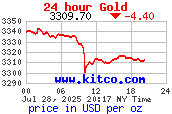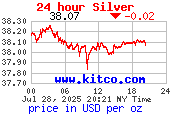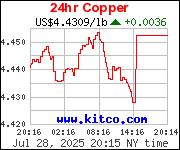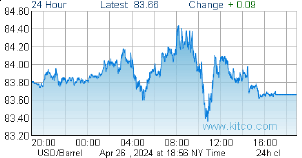Yesterday’s major news from Gold Bullion Development (GBB, TSX-V) confirmed in our view that the company has indeed made a very significant exploration breakthrough in the LONG Bars Zone of the Granada Gold Property. Major deposits aren’t found overnight – they often take a lot of time and hard work with some hits and misses along the way, but the progress Gold Bullion has made over just the last four months has been impressive to say the least. Drill, drill, drill is Frank Basa’s strategy and it’s working. The end game here is huge. Absolutely huge. The multi-million ounce potential of the LONG Bars Zone is more real today than ever, and we’ll explain why based on yesterday’s news.
As GR-10-53 further demonstrated yesterday (a stellar hole with 68.3 metres of 2.16 g/t Au within a wider envelope of 110.5 metres of 1.34 g/t Au, believed to closely approximate true width), Granada does have a potential higher grade, near-surface “starter pit” within the Preliminary Block Model. The best results are yet to come from the Eastern Extension which now essentially covers the same surface area as the Block Model and where there are great showings in all directions – east, north and even south now – those assays are pending and Gold Bullion has contracted a third lab (ALS Chemex in Val d’Or) to “expedite delivery of additional drill results”. Drilling in the Eastern Extension did not start until June and it appears GENIVAR did not begin to hit all the really good stuff out there until July, so assays on a lot of potentially very good holes are in the pipeline. Just one of those (there are many) is GR-10-86 which, based on visuals, appears to have found an extension to the high grade #2 Vein on a 250-metre step-out east-southeast of the Block Model. Large alteration zones in GR-10-86 with visible gold observed in porphyry and in a quartz vein at two different depths.
We’re excited with yesterday’s news because as we were hoping, Gold Bullion has given us important new geological details on the LONG Bars Zone that help immensely in terms of better understanding just how big this deposit could become. It’s interesting to note that “GENIVAR”, Gold Bullion’s geological consultant, was mentioned no less than 8 times in yesterday’s news release (yes, it’s important to pay attention to the seemingly little details). “Gold Bullion” was mentioned 9 times. Our interpretation of this change is that GENIVAR has stepped up to the plate in a major way here for one simple reason: They see that something perhaps very big has started to unfold at Granada. No doubt they had to give their blessing to yesterday’s news, every single word. They are very respected and error on the side of caution. You can take what they say to the bank. Their involvement with this project and their excitement with it speaks volumes.
The style of mineralization has changed at Granada from how it was described in the spring and historically. Mineralization is no longer related to just quartz veining. “Granada is a sediment-hosted, structurally controlled vein-type deposit (quartz veins, veinlets, stockworks, breccias) that has been intruded by a series of syenite feldspar porphyry sills and dykes mineralized with finely disseminated pyrite and/or arsenopyrite.” We know that visible gold and disseminated sulphides are showing up in the porphyry, the significance of which will become more clear as additional assays roll in.
Granada, or at least a portion of it, is showing the characteristics of a porphyry-style deposit – this is potentially highly significant but whether there is a porphyry deposit at Granada still requires confirmation. Below is some information directly from the Geological Survey of Canada regarding the nature of porphyry deposits:
- “Porphyry deposits are large, low to medium grade deposits (grades ranging from 0.2 to 2.0 g/t Au) in which primary (hypogene) ore minerals are dominantly structurally controlled and which are spatially and genetically related to felsic to intermediate porphyritic intrusions. They are distinguished by other granite-related deposits such as skarns and mantos by their large size and structural control, mainly stockworks, veins, vein sets, fractures and breccias. Porphyry deposits typically contain hundreds of millions of tonnes of ore, though they range in size from tens of millions to billions of tonnes.”
- “A close temporal and genetic relationship between magmatic activity and hydrothermal mineralization in porphyry deposits is indicated by the presence of intermineral intrusions and breccias that were emplaced between or during periods of mineralization.”
- “The mineralogy of porphyry deposits is highly varied, although pyrite is typically the dominant sulphide mineral, reflecting the fact that these deposits are huge sulphur anomolies.”
- “Hydrothermal alteration is extensive and typically zoned on a deposit scale as well as around individual veins and fractures.”
With mineralization at Granada no longer restricted to just quartz veining, tonnage possibilities for the LONG Bars Zone are dramatic. This is going to be about volume. We know they’ve already got a “high grade” starter pit which is important. The grade near-surface in some areas elsewhere, even if it’s only half a gram per tonne in some instances, is mineable. There are a lot of very profitable mines that are low cost (as this one should be) and operating very effectively on grades of even half a gram (or less) per tonne, and not just with gold at $1,250 an ounce. Investors have to understand that. That’s why when we see results like 182 metres of 0.44 g/t Au (GR-10-47), 249.6 metres of 0.32 g/t Au (GR-10-42) and 158.2 metres of 0.31 g/t Au (GR-10-35), we are encouraged – nice intersections of mineable grade, and the numbers are going to get a lot better than that – this is still very early. Keep in mind, too, that the mined grade at Granada has always come out better than the assay grades (the so-called “upgrading effect” which is common in the Abitibi and elsewhere). At a minimum you can likely add at least 35% to those above grades and probably more as Basa has already explained (and proven with the large bulk sample). What Gold Bullion should probably consider doing, and we don’t understand why they’re not, is some larger diameter RC drilling (they’re doing NQ drilling at the moment) in certain areas of the LONG Bars Zone, especially for infill purposes. This will give a better representative grade. NQ drilling gives geologists a much better understanding of alteration and structure, however, and that’s critical especially at this stage of the game.
The Preliminary Block Model (2.4 to 2.6 million potential non-compliant ounces) is holding up very well as shown by GR-10-53, GR-10-47, GR-10-41 and GR-10-33. The northern half of the Block Model is looking really interesting – large porphyry intrusions cover a good portion of the waste pile (which has yet to be drilled) and northeasterly trending faults are running right through it. The “northeastern” section of the Block Model, where limited historical drilling has taken place, is showing excellent promise as demonstrated by the first result from there – GR-10-47 intercepted 1.68 g/t Au over 28 metres. A total of 14 assays are pending from this particular area.
Mineralization remains open in all directions at Granada. And northeasterly trending faults are believed to be excellent hosts for higher grade mineralization.
As BMR readers know, we have followed this story intensely from the beginning and first alerted our readers to the potential of Gold Bullion’s Granada Gold Property last December when the stock was sitting at just seven cents. We’ve been to the property three times – our boots have been on the ground in the LONG Bars Zone. We haven’t seen anything yet that has discouraged us. In fact, after yesterday’s news, we believe in this more than ever. This has all the potential of being a massive deposit in the making and we believe in Basa and his team’s abilities to make it happen.
 BullMarketRun.ca
BullMarketRun.ca








We received an email from “Mike” on this story, asking, “Why don’t you mention the dud holes WITHIN the Block Model which was also released yesterday?”
We welcome all comments, both positive and negative, so thank you Mike. Let me explain.
There were 5 Block Model holes released yesterday – 53, 47, 35, 34 and 32 (26 by the way is neither within the Block Model or the Eastern Extension). Of the five, 53 was outstanding. 47 was very good. 35, as we mentioned in our story, returned an intersection of 158.2 metres grading 0.31. The only “duds”, if you want to call them that, were 34 and 32. They still hit mineralization but low grades and not impressive widths. In a deposit such as this, that’s going to happen – that’s a geological fact. Not every hole is going to hit, especially at this stage as GENIVAR is still drilling a lot for structure. As the drill grid tightens, grades and intersections will both improve. The Block Model is holding up very well. There’s still a lot of area to cover and there’s also considerable depth potential.
You have an excellent starter pit within the Block Model.
I hope that helps.
Comment by Jon - BMR — September 10, 2010 @ 6:00 am
I admit hole 53 was good (not outstanding). 1.31 g/t Au over 11 metres (Hole 32) and 1.16 g/t Au over 9.2 metres (Hole 35) isn’t good enough. Neither is hole 47, which returned 1.68 g/t Au over 28 metres. Is the block model falling apart?
Comment by Mike — September 10, 2010 @ 6:20 am
The Preliminary Block Model is in great shape, actually, and at the end of the day I wouldn’t be surprised to see it come out higher than 2.4 to 2.6 especially when it is tested at depth. One very important thing you have to understand, Mike, is that GBB completed a large bulk sample (30,000 tonnes) in 2007, prior to drilling, which quantified the grade within the Preliminary Block Model. In fact, it also showed that the mined grade is higher than the assay grades at Granada. Few companies at GBB’s stage of exploration have done such large bulk samples. Secondly, I would argue 53 was outstanding – it was basically true width. 68.3 metres of 2.16 is a great drill result for this type of deposit. Hole 47 confirmed a northeasterly fault and returned a nice grade (1.68) over 28 metres and a long intersection of mineable grade. This hole is the first of 15 drilled in an area that has seen just very limited historical drilling. GENIVAR is finding structure. There’s still a lot of exploratory drilling going on within this area. RC drilling would give a better representation of the grade, but again GBB did the bulk sample. The waste pile is a huge untested target with large porphyry intrusives and northeasterly trending faults going right through it. Not every hole is going to hit – there will be some outstanding holes, some decent holes, and some lousy holes at this stage. That’s the way it is. When the drill pattern tightens up, you’ll see better grades and longer intersections.
Comment by Jon - BMR — September 10, 2010 @ 9:15 am
Way too early in the game to be concerned about that. We already know the area to the northwest of 17 looks very promising visually. Is it unusual to see a couple of holes that don’t hit? Not at all at this stage. Keep in mind too that a hole that has not assayed well does not mean it was necessarily a “bad” hole from a geologist’s point of view – for all we know 48 and 50 may have delivered very significant information with regard to structure which may have led GENIVAR to a better trail, perhaps for example to the northwest of 17 where some good visuals were reported. Some of these holes in the East will hit and some will not as they continue with exploratory drilling. They could drill 10 or 20 metres from 48 and 50 and hit something. Anything’s possible. Sometimes it’s like searching for a needle in a haystack. But they’ll track it down.
Comment by Jon - BMR — September 10, 2010 @ 9:55 am